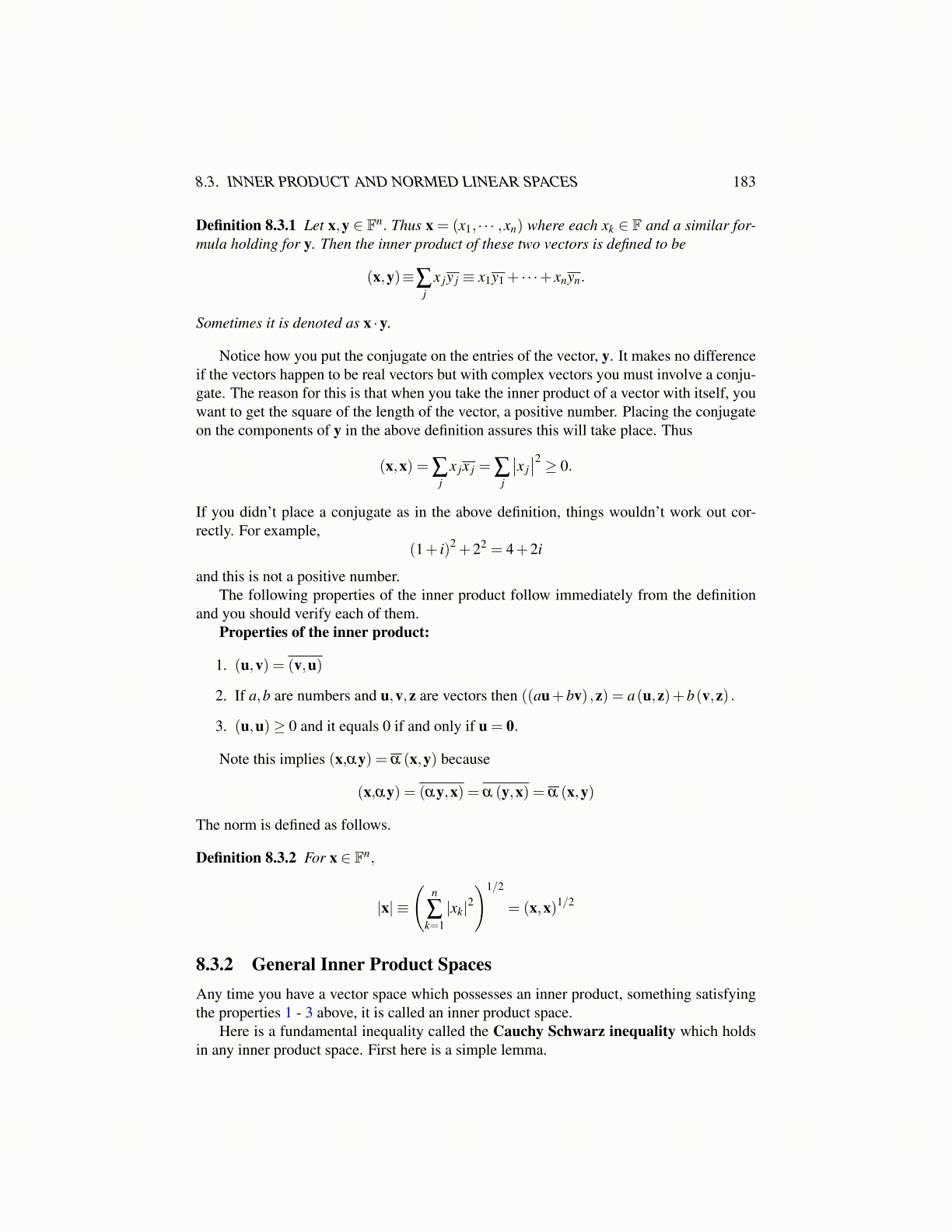
8.3. INNER PRODUCT AND NORMED LINEAR SPACES 183
Definition 8.3.1 Let x,y ∈ Fn. Thus x = (x1, · · · ,xn) where each xk ∈ F and a similar for-mula holding for y. Then the inner product of these two vectors is defined to be
(x,y)≡∑j
x jy j ≡ x1y1 + · · ·+ xnyn.
Sometimes it is denoted as x ·y.
Notice how you put the conjugate on the entries of the vector, y. It makes no differenceif the vectors happen to be real vectors but with complex vectors you must involve a conju-gate. The reason for this is that when you take the inner product of a vector with itself, youwant to get the square of the length of the vector, a positive number. Placing the conjugateon the components of y in the above definition assures this will take place. Thus
(x,x) = ∑j
x jx j = ∑j
∣∣x j∣∣2 ≥ 0.
If you didn’t place a conjugate as in the above definition, things wouldn’t work out cor-rectly. For example,
(1+ i)2 +22 = 4+2i
and this is not a positive number.The following properties of the inner product follow immediately from the definition
and you should verify each of them.Properties of the inner product:
1. (u,v) = (v,u)
2. If a,b are numbers and u,v,z are vectors then ((au+bv) ,z) = a(u,z)+b(v,z) .
3. (u,u)≥ 0 and it equals 0 if and only if u = 0.
Note this implies (x,αy) = α (x,y) because
(x,αy) = (αy,x) = α (y,x) = α (x,y)
The norm is defined as follows.
Definition 8.3.2 For x ∈ Fn,
|x| ≡
(n
∑k=1|xk|2
)1/2
= (x,x)1/2
8.3.2 General Inner Product SpacesAny time you have a vector space which possesses an inner product, something satisfyingthe properties 1 - 3 above, it is called an inner product space.
Here is a fundamental inequality called the Cauchy Schwarz inequality which holdsin any inner product space. First here is a simple lemma.